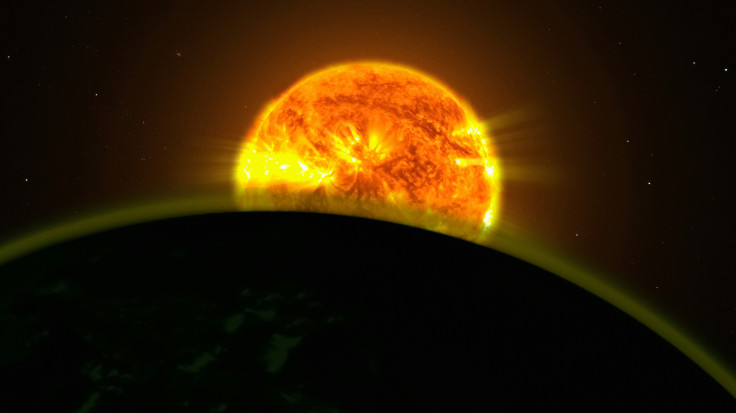3I/ATLAS: Planetary Scientists Are 'Super Excited' As NASA Confirms It Poses 'No Threat' to Earth
NASA reassures that this close cosmic encounter is a source of learning, not alarm

The cosmos never fails to deliver a spectacle, and the recent visit by Comet 3I/ATLAS was no exception. For a brief moment, the attention of planetary scientists and the public alike was fixed on this icy wanderer. While the potential for a dramatic encounter sparked widespread interest, NASA has now offered a definitive and reassuring answer to the question on everyone's mind: Earth is safe.
The comet 3I/ATLAS, which originated outside our solar system, passed its closest point to the Sun (its perihelion) on Wednesday and Thursday. This gave scientists prime conditions to study what it is made of.
What Makes 3I/ATLAS So Special?
The discovery of 3I/ATLAS marked just the third time an interstellar comet had been observed, creating major buzz for researchers.
Just to reiterate for the curious:
— Jason Wright (@Astro_Wright) July 30, 2025
While there's *nothing wrong* with thinking about whether some interstellar objects could be alien technology, 3I/ATLAS has had its coma clearly detected since July 3. It's very clearly, *unambiguously*, a comet.https://t.co/AbLu7za1V0
Referring to the object, Jason Wright, a professor of astronomy and astrophysics and director of the Penn State Extraterrestrial Intelligence Center at Pennsylvania State University, told Newsweek this month: 'This is only the third such interstellar comet we've ever been able to study, and planetary scientists are super excited to learn about what comets in other solar systems are like.'
No Threat to Earth, But Major Science Gain
NASA confirmed that 3I/ATLAS presents no risk to Earth, announcing the news via its Solar System website. The space agency, in an online update, verified that the comet poses no threat to our planet. 'Comet 3I/ATLAS poses no threat to Earth and will remain far away,' NASA assured.
There's a new interstellar comet in the neighborhood!
— NASA JPL (@NASAJPL) July 2, 2025
Known as 3I/ATLAS, this comet poses no threat to Earth – but it does provide a rare opportunity to study an object that originated outside of our solar system: https://t.co/7ihCiHi91t pic.twitter.com/2XT3NRyCOz
Conversely, it offers a unique chance to examine matter that developed outside of our own star system. This object also provides a unique opportunity to observe material that originated in a different star system.
Will 3I/ATLAS Be Visible From Earth?
Astronomers were able to view 3I/ATLAS using ground-based telescopes until September 2025, according to a report by Economic Times. It will then shift too near the Sun to be seen, only to become visible again in December 2025. The ESA took a photograph of the comet on October 7th, capturing its brilliant coma as it passed close to Mars.
3I/ATLAS is currently obscured by the Sun's brightness, meaning it is challenging to view from Earth without advanced telescopes.
The Loeb Hypothesis: A 40% Chance 3I/ATLAS Is Not Natural
Harvard astronomer Avi Loeb stated that he believes there is a 40 per cent possibility that 3I/ATLAS is technology from an extraterrestrial civilisation. On his blog, Loeb posed the question of whether the object could be an alien probe that is simply masquerading as a natural comet.
Israeli Harvard professor Avi Loeb is warning everyone to take their vacations before October 29th, saying the approach of the Manhattan-sized interstellar object 3I/ATLAS “could change everything.”
— Shadow of Ezra (@ShadowofEzra) October 20, 2025
Loeb still believes 3I/ATLAS could be an alien spacecraft and claims NASA isn’t… pic.twitter.com/LQcrUBCkY3
He pointed out unusual characteristics, such as non-gravitational acceleration and an atypical trajectory, which brings the comet close to Jupiter, Venus, and Mars.
Avi Loeb additionally issued a warning, suggesting 3I/ATLAS could be a 'black swan event'—an infrequent, significant occurrence that is hard to forecast. He insisted that worldwide organisations should be prepared and consider ways to react if the object were to appear.
A Welcome Relief: Excitement, Not Alarm
While such speculation from experts like Loeb certainly captures the imagination, it's essential to return to the core certainty provided by the space agency: NASA has officially confirmed that Comet 3I/ATLAS poses no danger to Earth. Instead of a threat, this interstellar visitor is being celebrated as a genuinely unique scientific gift.
© Copyright IBTimes 2025. All rights reserved.



















